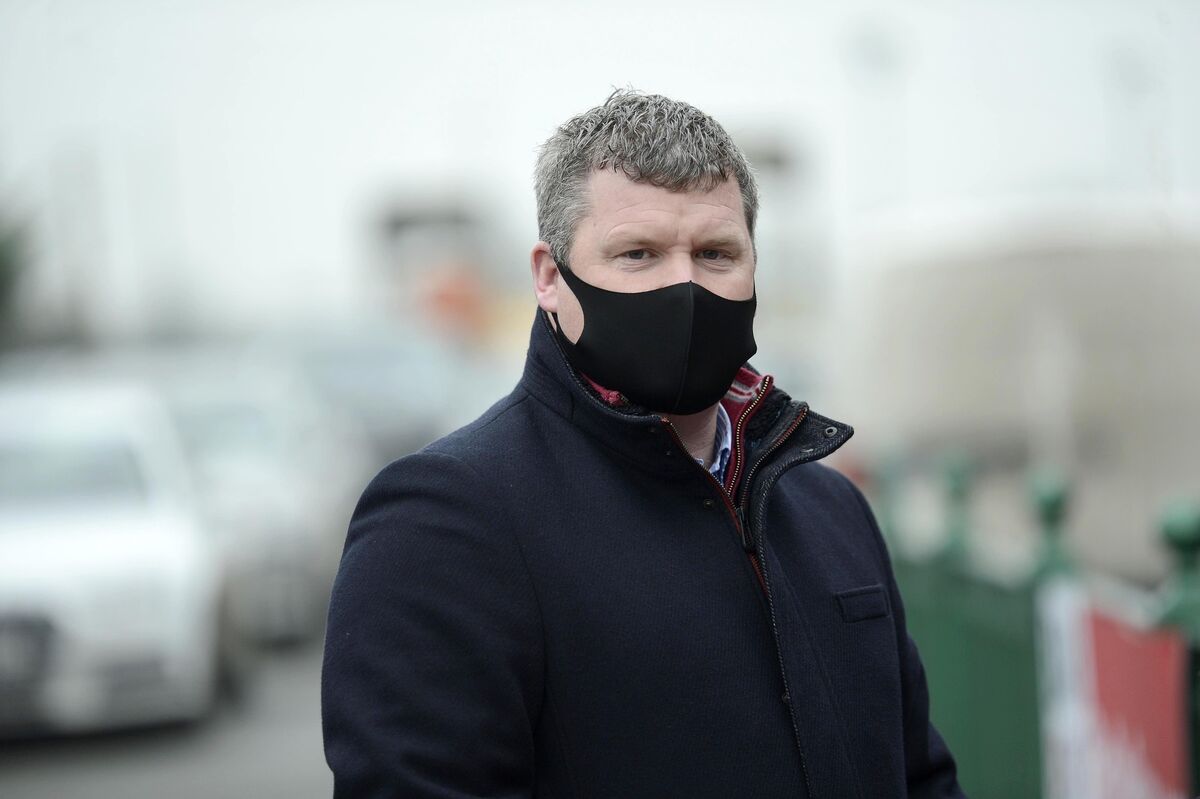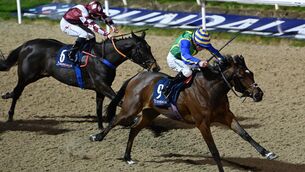Gordon Elliott ban: The mood music has changed and Irish racing needs to find its feet

I received a text yesterday morning, before we knew of what is effectively a six-month suspension for trainer Gordon Elliott for bringing racing into disrepute. It was in response to another brilliant episode of the TG4 show on legendary racehorses, Laochra na Rásaíochta.
“Best show of series yet... poignant and uplifting at the same time... class horses that endured and a time when racing crossed over into the mainstream in only positive ways.”
This instalment provided warm doses of nostalgia in the form of Danoli, Limestone Lad with a hint of Solerina, Doran’s Pride and Beef Or Salmon. Horses that transcended the sport not just because of their feats on the track, but because of the people associated with them.
None were from the fashionable yards, though Michael Hourigan did ride a considerable wave thanks to the exploits of his two stars for a period of time.
Tom Foley’s disarming smile and utter trueness to himself and his background made him a national treasure. He was answering questions about Danoli right up to his death after a typically stoic battle with cancer, just nine days ago.
The Bowe family only train horses they breed themselves and Michael spoke of red mini bus full of “geriatrics” arriving at the Gathabawn farm to see Limestone Lad, such was the extent of which he captured the public’s imagination.
“It took about an hour and a half unload them the bus and they all had to have a look at him,” he said. “And it took another hour and a half for load them back up.”
These weren’t regular racegoers. But they adored the horse and his underdog background.
That kind of thing doesn’t really happen now. The world has changed and racing with it. More professional, more of a concentration of power and wealth.
Perhaps more quality in Ireland than ever before and us horse lovers lap that up. But a dearth of x-factor to engage those not already wedded to the sport has changed the mood music.
So, despite securing unprecedented success on the international stage for a country that lauds sporting glory, when racing hits the mainstream now, it isn’t usually good news.
You cannot defend Gordon Elliott for inanely allowing himself to be photographed sitting on the dead horse Morgan. Nor Rob James doing likewise on another unfortunate horse. Just quite what was going on in their minds at the time is hard to fathom. They are horrifying images.
The condemnation has been swift and proper and both men have accepted the detrimental impact they have had on their sport and the industry that drives it. That they were soon to become victims of the mob mentality is no surprise, though worrying. The lessons of Shane McEntee and Caroline Flack have not been learned. Public figures are not immune from being hounded to suicide.
Elliott and James have been deemed guilty of heinous crimes in the court of public judgement, though they have not, in fact, committed any apart from damaging their reputations and that of their sport. They should be remorseful for the disrespect they showed to the dead horses but I hope they have enough support to prevent them descending into too dark a place.
Industry chiefs must look at the wider issues here. Twelve months on from Cheltenham, when another spectacular sporting success was rendered irrelevant by the charge of single-handedly risking the lives of the human race for allowing the festival to go ahead, racing in Ireland is in the bold boy corner again, undoing so much of the goodwill earned with the clockwork running of racing behind closed doors since June.
The resentment was always bubbling away in the background though and the reasons are multiple. For starters, some people cannot abide animals’ participation in sport.
Then, there is the Sport of Kings image that does such a disservice to the rustic nature of the sport. Point-to-point producer John Nallen described his job as providing “toys for big boys”. Racing needs rich people to have an interest in racing as a hobby. That isn’t something that should embarrass anyone, given that this money trickles right the way down to the breeder. And of the approximate 7,000 breeders that exist in all 32 counties of the island of Ireland, 92% own five broodmares or less.

But with the perception being that the rich are only getting richer, the provision of €76m in funding by the State causes apoplexy in some quarters. There is nothing extraordinary about providing a financial stimulus to an industry but it is difficult for people with no understanding of this particular one to wear when people are sleeping on the streets, or when carers aren’t available or there is no funding for any number of vital services society requires.
But again, the PR on this is poor. This is an investment that provides a return to the Exchequer. According to the Deloitte report on the economic impact of horseracing and the bloodstock industry in Ireland from 2017, the sector has a value of €1.8bn per annum, generating direct and indirect employment of 29,000 and €438m in annual sales.
And mentioning employment, Elliott has jobs for almost 80 people alone. Think of the impact of that on a rural area, and the local economy. That figure is so high, to ensure the equine denizens of Cullentra House – custom-built from a greenfield site – receive the very best care.
But politicians need to be populist. That’s what gets them elected. They will note the visceral reaction, and while there are some defenders in Leinster House, more TDs than is comfortable for the sector will be calculating what will cost votes and attract them.
The reputational damage is massive and that it provides ammunition to the growing forces desperate to wipe horseracing out is regrettable. That, of course, was probably the aim of whoever released the image and certainly the James video.
Judging from the online campaign of the past month or so against Elliott, destroying him and his empire would seem to have been a goal too.
And so, here we are. Elliott, if he has the hunger for it, will have the chance to write a redemptive story and deserves it.
For racing and the bloodstock industry, there is an opportunity to enlighten, educate and demystify what it’s about.
An opportunity, and, perhaps, a necessity.











